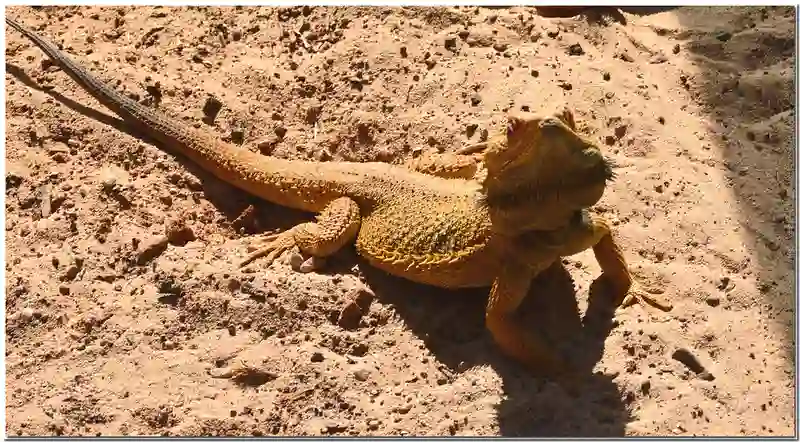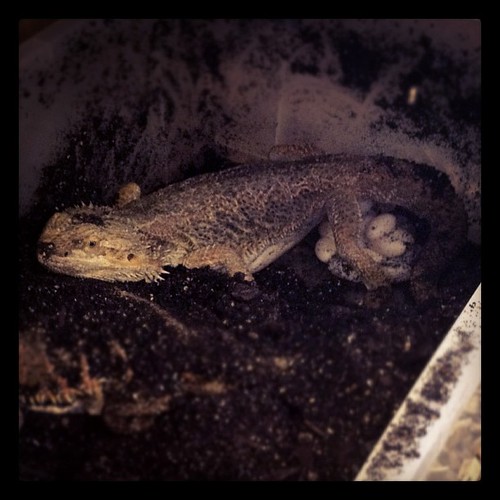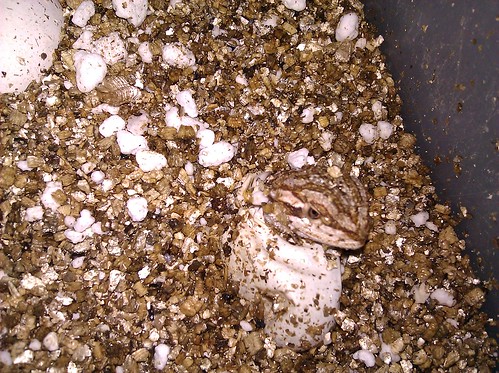Bearded dragon eggs take around 50 to 80 days to hatch, with an average of 60 days. The incubation time can vary depending on factors such as temperature and humidity.
The temperature for incubating bearded dragon eggs should be around 29°C (84°F). During incubation, it is important to monitor the temperature and humidity levels regularly to ensure that the environment is stable.
Bearded dragon eggs should not be turned during incubation. After about two months of development, the baby bearded dragons will be ready to hatch from their eggs. It is important to not disturb the hatching bearded dragons and let them hatch fully in their own time.
Hatching Process
Signs That Indicate Hatching is Imminent
As the incubation period comes to an end, you may start noticing signs that the eggs are about to hatch. One of the most noticeable indications is when the eggs start to sweat.
This is due to increased moisture from inside the egg as the baby bearded dragon breathes more rapidly. You may also notice slight movements or vibrations coming from inside the egg, indicating that the baby is preparing for its first breath of air.
Another sign of imminent hatching is when a small crack appears on the surface of one or more eggs. This crack will slowly start to widen over time as the baby bearded dragon continues to struggle and push its way out of its shell.
What To Expect During The Hatching Process
Once hatching begins, it can take anywhere from a few hours to several days for all eggs in a clutch to hatch completely. The babies will continue moving and pushing against their shells until they finally break through.
During this process, it’s important not to disturb them unnecessarily or interfere with their natural instincts. Baby bearded dragons will usually emerge from their shells wet and exhausted.
They may appear inactive at first but should gradually gain strength and become more active over time. It’s essential not to remove them from their shells prematurely as they need some time in there absorbing nutrients and strengthening themselves before venturing into their new world.
Overall, watching a clutch of bearded dragon eggs hatch can be an exciting experience for any reptile enthusiast. By monitoring closely for signs of hatching and allowing nature to take its course, you can ensure that your newly hatched babies have a healthy start in life.
Caring for Hatchlings
How to care for newly hatched babies:
Once the bearded dragon eggs have hatched, you will have a group of tiny babies that will require special care. The first thing you should do is separate the hatchlings from each other and move them to a warm and humid environment.
A small enclosure with reptile carpet or paper towels as substrate, a heat source, and a shallow bowl of water will suffice.
Make sure the temperature stays between 85-90°F, with a humidity level between 70-80%. This is crucial for their survival at this early stage.
Feeding:
Newly hatched bearded dragons are typically not interested in eating for the first day or two after hatching, as they are still absorbing their yolk sacs.
Once they start showing signs of hunger, it’s essential to offer them small and appropriately sized food items such as pinhead crickets, fruit flies or small mealworms. They should be fed several times per day until they reach around six weeks old when feeding can be reduced to once daily.
Housing:
As the hatchlings grow bigger, they will need more space. A ten-gallon tank can house up to five baby beardies until they outgrow it in just a few months. As they grow bigger and stronger enough to handle larger prey items like crickets and dubia roaches, feeding frequency should gradually reduce while prey size increases.
General Care Tips:
It’s crucial to maintain proper temperatures and humidity levels throughout their development since young dragons are more susceptible to health problems than adults.
Be sure to clean their enclosure regularly; remove any uneaten food or fecal matter promptly; replace substrate often enough so that it doesn’t get too dirty; provide sunlight exposure whenever possible; keep them hydrated by spraying them with water regularly, and watch for any signs of illness or malnutrition.
By providing the right care, you can ensure that your hatchlings grow up to be healthy and strong adults.
Conclusion
Bearded dragons are fascinating creatures, and understanding the breeding and hatching process is essential for their proper care. In this article, we discussed the average incubation period for bearded dragon eggs, as well as factors that can affect it.
We also talked about the importance of maintaining optimal temperature and humidity levels during egg incubation, as well as how to monitor the growth and development of embryos using candling.
Ultimately, responsible breeding practices are critical for maintaining healthy populations of captive bearded dragons. With this knowledge in hand, hobbyists can work towards furthering our understanding of these fascinating reptiles while also ensuring their welfare.




Leave a Reply